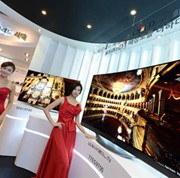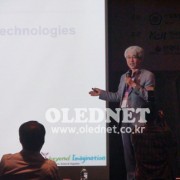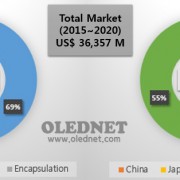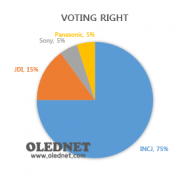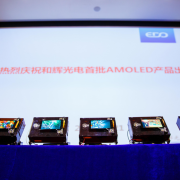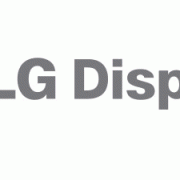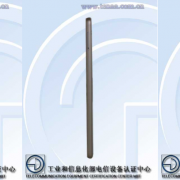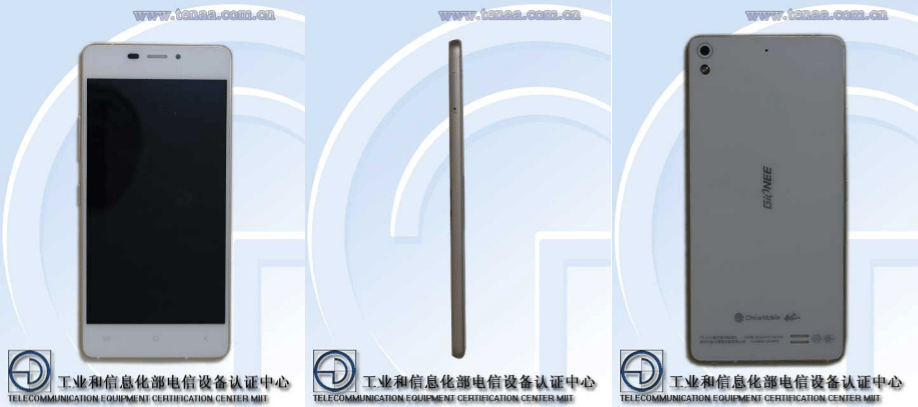LG Electronics to release the world’s first ‘Ultra OLED TV’
LG Electronics unveiled the Ultra OLED TV on August 25 at the Conrad Hotel in Yoido where Ha Hyun-hwoi, president of Home Entertainment (HE) and Choi Sang-gyu, head of Korea sales and marketing at LG Electronics were in attendance.
□ President Ha Hyun-hwoi announced a shift in generation
“The Ultra OLED TV is an epitome of TV technology combining the best display and resolution,” the president Ha Hyun-Hwoi said, adding that “The future OLED TV market will be expanded, leading the display technologies.” Regarding the curved surface of OLED competitive with LCD, he explained “The priority is given to the resolution of a TV” and “There is no distortion of color or change of picture quality in the curved surface of the OLED TV”. Saying that “OLED TV will play a role of a game changer replacing the LCD within 2-3 years with various merits like color reproduction rate, contrast range, viewing angle, etc.” he also emphasized “The next generation of TV market trend will led by the state-of-the-art premium Ultra OLED TV in existence”.
□ Concentration of hardware competitiveness and platform capacity of LG
The LG Ultra OLED TV provides the most lifelike graphic picture quality with ultra HD resolution of its unique WRGB technology and 33 million sub-pixels. For the characteristics of the self-lighting pixels, the indefinite contrast rate is allowed, reproducing perfect black color. With rapid response speed, it also reproduces natural image without any afterimages. This product is also equipped with a sound quality which is appropriate for the flawless picture quality. Designed with the world-renowned professional audio company Harman, it delivers balanced wide-range sound quality of exhilarating effects with multi-channel ultra surround technology. In addition, the sense of immersion and the aesthetic effect were maximized for the innovative design approaches of ultra slim curved screen and leaf-shaped stand. Due to its own attribute, there is no distortion or change of color in OLED TV watching from every direction. It can be installed on the wall depending on the surrounding environment and preferences. Loaded with innovative web OS, this product offers significant values more than the existing smart TV. The web-based smart TV is recognized as a new strong point of TV platform of reorganizing the smart TV market by the ‘simple usability’ through ▲simple transition ▲simple search ▲simple connection which is the essence of a TV.
□ Establishment of next generation TV market pioneering base
LG Electronics plans to lead the next generation TV market by securing medium-and long-term growth momentum through OLED TV. And through the continuous innovation in manufacturing technology, R&D, and investment on marketing, the OLED TV era is to be advanced and the OLED TV will be the new growth engine for display industries through the expansion of ecosystem. Established the OLED TV manufacturing line in major cities over the world from the last year, LG Electronics will release the Ultra OLED TV at the beginning next month in North America, Europe, etc. sequentially.
□ Presales to begin on 26th at LG Electronics distributors nationwide
LG Electronics will take pre-orders for 65-inch Ultra OLED TV (Model: 65EC9700) from the 26th to 29th of next month at the LG Electronics distributors nationwide. The 65-inch Ultra OLED TV will be sold at a price of 12,000,000 won through the cashback benefit. The delivery starts from the end of September. And LG will consolidate the lineup of the Ultra OLED TV as releasing 77-inch (Model: 77EG9700) model in the fourth quarter.

